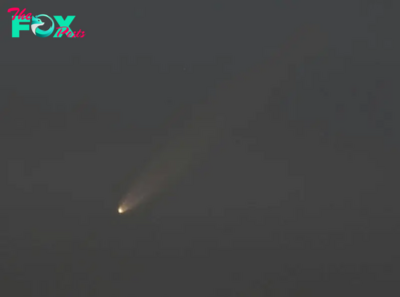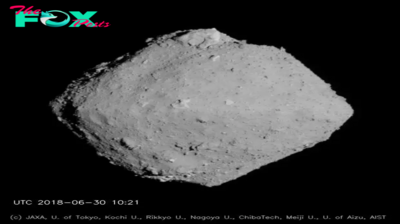Science
NASA's Parker Solar Probe makes 1st-of-its-kind observation within a coronal mass ejection
Every so often, the sun's simmering magnetic field burps colossal clouds of plasma out into the space beyond. These are called coronal mass ejections (CMEs). If one CME strikes Earth, for example, the result can be spectacular auroras — and, just-as-spectacular disruptions of electrical grids and satellites.
Now, NASA's Parker Solar Probe has gotten a first-ever peek inside a CME as it erupted from the sun. And what lies inside appears to be a treasure trove for solar physicists. The probe's visible-light-detecting, Wide-field Imager for Parker Solar Probe (WISPR) instrument caught clear, turbulent eddies within the CME.
The eddies are what physicists call Kelvin-Helmholtz instabilities (KHI). Physicists think KHI events occur whenever one patch of fast-moving fluid interacts with another. On Earth, KHI occurs in clouds when the wind speed at one end of the cloud is different from that at the other end.
Solar physicists have inferred that KHI exist in CMEs, as plasma in a CME moves at odds with the background solar wind. But they have never had the proper equipment, in the proper place, to observe the phenomena.
Related: 'Monumental achievement for all humanity': NASA's Parker Solar Probe is gearing up for a record-breaking encounter with the sun
"The turbulence that gives rise to KHI plays a fundamental role in regulating the dynamics of CMEs flowing through the ambient solar wind," said Evangelos Paouris, a solar physicist at George Mason University, in a statement. "Hence, understanding turbulence is key in achieving a deeper understanding of CME evolution and kinematics."
—Why NASA is launching 3 rockets into the solar eclipse next week
—Powerful X-class solar flare slams Earth, triggering radio blackout over the Pacific Ocean
—4 ways you can help NASA study the April 8 solar eclipse
The Parker Solar Probe launched on Aug. 12, 2018. Since then, the probe's elliptical orbit has allowed it to enter the sun's corona closer than ever before — in essence, becoming the first human-made object to enter the sun's outer atmosphere, just 11.5 solar radii from the sun's surface.
-

 Science2d ago
Science2d agoWhy Risky Wildfire Zones Have Been Increasing Around the World
-

 Science2d ago
Science2d agoIt’s Time to Redefine What a Megafire Is in the Climate Change Era
-

 Science3d ago
Science3d ago4 Astronauts Return to Earth After Being Delayed by Boeing’s Capsule Trouble and Hurricane Milton
-

 Science4d ago
Science4d agoThe Elegance and Awkwardness of NASA’s New Moon Suit, Designed by Axiom and Prada
-

 Science1w ago
Science1w agoSpaceX Launches Its Mega Starship Rocket. This Time, Mechanical Arms Catch It at Landing
-

 Science3w ago
Science3w agoYou Won’t Want to Miss October’s Rare Comet Sighting. Here’s How and When You Can See It
-

 Science1m ago
Science1m agoA New Spacecraft Could Help Determine if There’s Life on a Moon of Jupiter
-

 Science1m ago
Science1m agoWe Can Thank Deep-Space Asteroids for Helping Start Life on Earth



























